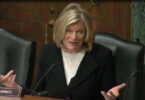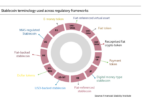Today Fitch published a research paper flagging potential short-term credit market risks if there’s a sudden liquidation of reserves that back stablecoins in response to withdrawals. And as a result, there may be pressure for legislation. Its concerns mirror those expressed by Boston Federal Reserve President Eric Rosengren last Friday.
Both Rosengren and Fitch showed the breakdown of the assets that back the largest US dollar stablecoin, Tether (market cap: $63 billion). Just 26.2% of reserves are held in cash, fiduciary deposits, reverse repos and government securities. Meanwhile, 49.6% is held in commercial paper and almost ten percent in corporate bonds.
The key point that both made is that stablecoins are growing, and the scale of commercial paper holdings may already be larger than most prime money market funds in the US and EMEA. So if there’s a run, it could disrupt the commercial paper market. The European Central Bank raised this point some time ago.
However, the report perhaps over-emphasized Tether and brushed aside the USDC stablecoin a bit too quickly. “USD Coin, the second-largest US dollar-linked stablecoin, is backed by US dollars on a 1:1 basis held in custody accounts,” says Fitch.
But what does that mean? If you read the USDC audit report, this is what it actually says. “US Dollars held in custody accounts are the total balances in accounts held by the Company at federally insured US depository institutions and in approved investments on behalf of the USDC holders.”
So those approved investments might also be commercial paper. We’ve asked Circle whether they can clarify. Don’t get me wrong. I’d prefer to hold money in USDC than Tether. (Disclosure: I own a small amount of USDC). If USDC also has commercial paper investments, then the scale of the market risk is larger. USDC balances went from $1 billion to $25 billion in just twelve months.
Regarding potential regulation, this week, the Vice-Chair of the Federal Reserve Randal Quarles, suggested that stablecoins should be backed by a combination of deposits held at the central bank and treasury bills. And former Bank of England Governor Mark Carney said stablecoin issuers should have access to central bank balance sheets.
However, the ECB’s warning of run risks also applied to short-term government bond markets if stablecoins reach sufficient scale.







